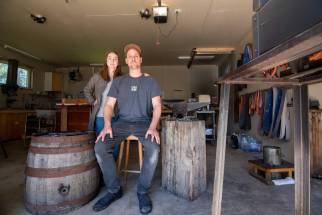Yes, that is a whisky barrel on my finger Marc Liss makes handmade rings and knives from barrels, blades and antlers
Read this article for free:
or
Already have an account? Log in here »
To continue reading, please subscribe:
Monthly Digital Subscription
$0 for the first 4 weeks*
- Enjoy unlimited reading on winnipegfreepress.com
- Read the E-Edition, our digital replica newspaper
- Access News Break, our award-winning app
- Play interactive puzzles
*No charge for 4 weeks then price increases to the regular rate of $19.00 plus GST every four weeks. Offer available to new and qualified returning subscribers only. Cancel any time.
Monthly Digital Subscription
$4.75/week*
- Enjoy unlimited reading on winnipegfreepress.com
- Read the E-Edition, our digital replica newspaper
- Access News Break, our award-winning app
- Play interactive puzzles
*Billed as $19 plus GST every four weeks. Cancel any time.
To continue reading, please subscribe:
Add Free Press access to your Brandon Sun subscription for only an additional
$1 for the first 4 weeks*
*Your next subscription payment will increase by $1.00 and you will be charged $16.99 plus GST for four weeks. After four weeks, your payment will increase to $23.99 plus GST every four weeks.
Read unlimited articles for free today:
or
Already have an account? Log in here »
Hey there, time traveller!
This article was published 03/06/2022 (1287 days ago), so information in it may no longer be current.
Old Gimli-based whisky barrels are ending up in homes across the globe.
Not in full barrel form, but as rings and knife handles.
The wood is one of several materials repurposed to support Marc Liss’s life work. Other ingredients include deer antlers shed near a Manitoban Hutterite colony and circular sawmill blades used in the 1850s through 1950s.

“It’s really not what I expected to be doing with my life,” Liss said of his business, Origin Handcrafted Goods.
He whittled sticks as a child. The hobby didn’t lead him to envision shipping kitchen and pocket knives across the globe, nor wood and antler rings.
Instead, Liss got his teaching degree. Carving took a backseat until he and his wife, Kayla Penelton — whom he’s known since Grade 1 — went to Whitehorse in 2010, the summer after their university graduation.
The pair had planned a trip to New Zealand and Europe and needed to make money. So, Liss joined his uncle’s Yukon-based construction company for a couple months.
“I had a lot of spare time in the evening, so I picked up a piece of spare wood and started carving a face into it,” Liss said.
He would work on the log for an hour nightly, and “fell in love with carving all over again,” he said.
When he came back to Manitoba in September, he was hooked. But, beginning another 50-hour project seemed daunting, so Liss looked to a new woodworking hobby — ring-making.
“I tried to make one and it wasn’t very good,” he said. “It fell apart, but… I loved it.”
YouTube tutorials aren’t Liss’s thing, he said. He spent a good portion of his early ring endeavours winging it and learning through trial and error.
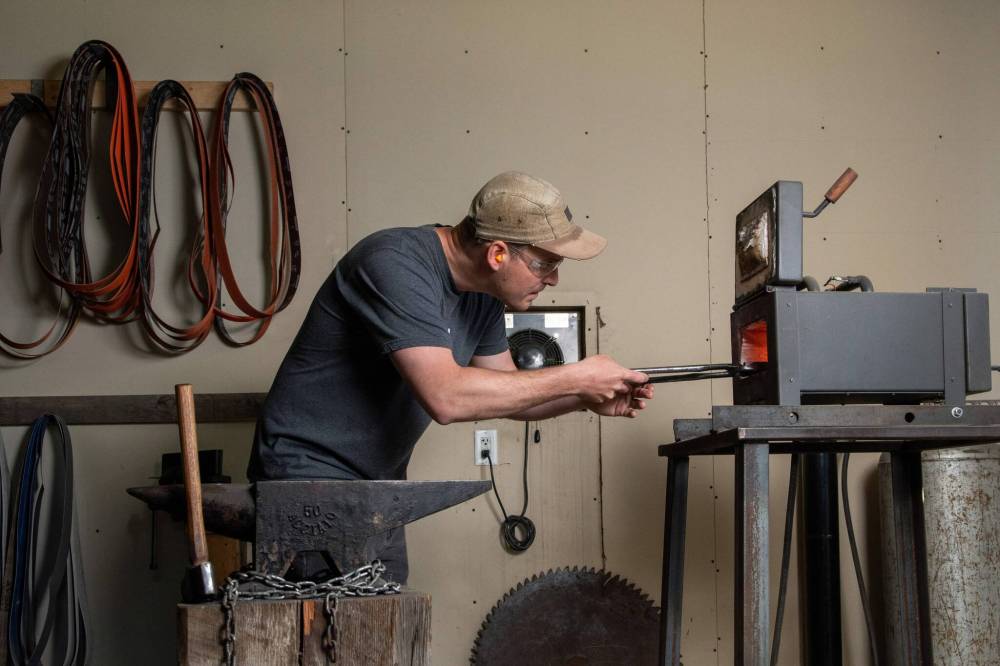
Each piece of jewelry would take roughly two hours to make, spread out over days due to gluing and drying phases. Trial and error led to Liss’s current formula of taking a lathe and sandpaper to wood to make a ring.
Liss said he got an artistic friend on board in the early months. The two crafted together, and when Liss travelled overseas in January, he had a bucket of rings to give away.
His friend began an Etsy shop to sell their wares. When Liss returned to Manitoba six months later, he found the business had a couple sales a month, he said.
Customer sales shot up roughly 50 per cent year-over-year through to 2020, Liss said.
His friend moved, and he took the business on full-time.
“A lot of people were buying (the rings) on Etsy as wedding bands,” Liss said. “To sell a plain wooden ring as a wedding band… there’s all these caveats. You have to say, ‘Don’t do this with it, don’t wear it for this.’”
He saw someone on Etsy selling pure carbon fibre rings. Carbon fibre is a strong, lightweight material that can be woven or coated.
“I was thinking about nothing else other than, ‘How can I make a carbon fibre ring?’” he said.
He hadn’t seen a mix of wood, antler and carbon fibre used in a ring before.
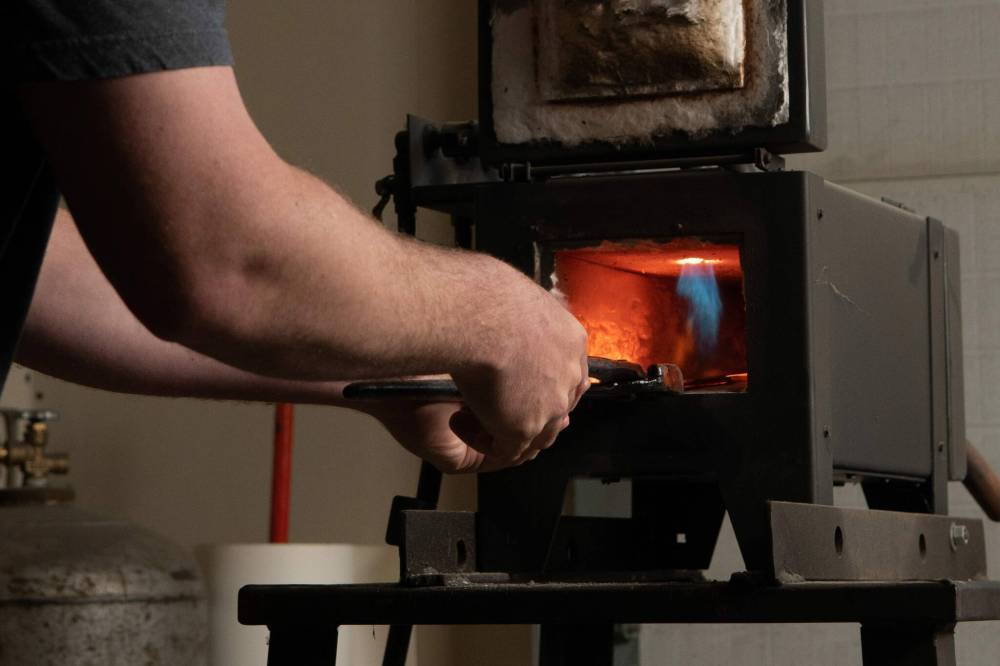
“I’ve really had to figure out my own system. There’s no textbook out there,” he said. “There was a lot of frustration and a lot of almost giving up.”
He developed a system roughly four years into Origin Handcrafted Goods. He mixes carbon fibre with resin, wraps it around his rings and bakes it on so the wood and antler are sealed and protected from natural elements.
Someone buying a ring now might get whisky barrel in their purchase, or Manitoba maple. Antlers must have been naturally shed, Liss said. He started incorporating antlers early on in his business.
He began knife-making the same way he did ring-making — as a hobby.
“I thought, ‘Oh, maybe I can make myself a whittling knife,’” Liss said.
He had most of the equipment, and his brother, a metal fabricator, let him use metal working tools.
Again, trial and error — and sometimes YouTube — became his best friends. He documented his progress on Instagram and attracted customers.
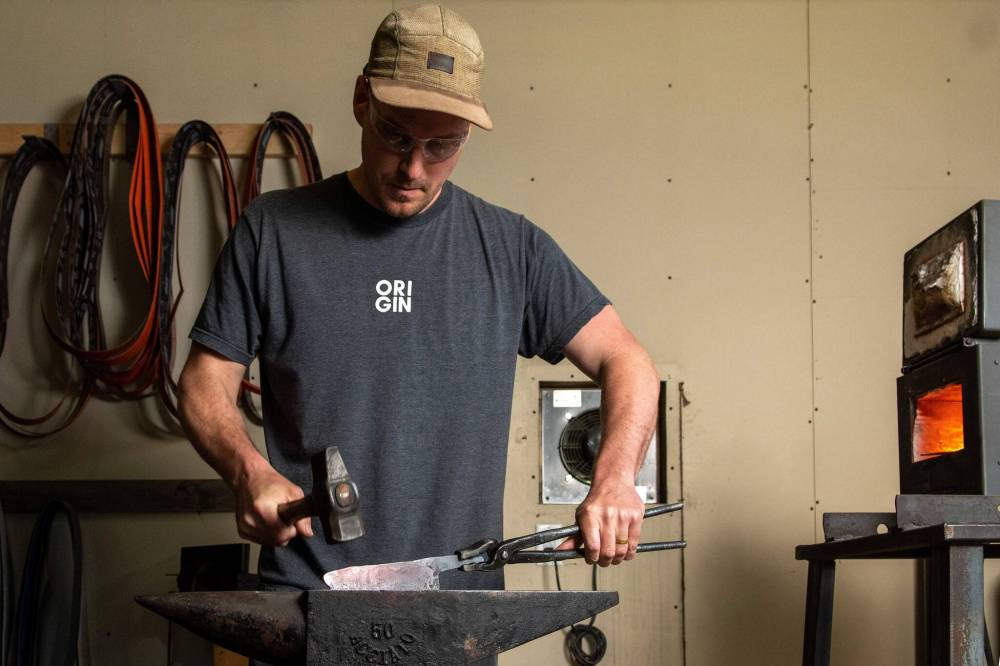
So knives joined Liss’s ring collection on Etsy. He started a website and, when he and Penelton moved to Balmoral in 2020, a Kickstarter.
The platform has been the force behind two Origin Handcrafted Goods pocket knife collections. Over 200 people across the globe have bought knives through the initiatives.
He’s shipped to China, Japan, Australia. His wife helps with some back-end business work.
Sales from Etsy are struggling, Liss said. He’s seeing less American customers, and wonders if the shopping site’s algorithm has changed.
“It’s a little bit of a black box,” he said. “Etsy changes something, (and) you just have to go with it.”
But, in-person events such as farmers markets are hit and miss for knife-makers, said Justin Lamoureux, president of the Manitoba Blacksmith Guild.
“Usually, the things that are being sold are like soap and candles and snacks,” Lamoureux said. “You’re looking at like $5 and $20 items, and then you (see) a table where it’s like $500 a knife. That’s a stark contrast.”
There are just a handful of knife-makers in the province, Lamoureux said — the guild had around 50 members pre-pandemic — and they tend to use online sites such as Etsy, Shopify and Instagram.
You should be a registered business to sell knives; however, you don’t need a trade licence or schooling to create and sell, Lamoureux noted.
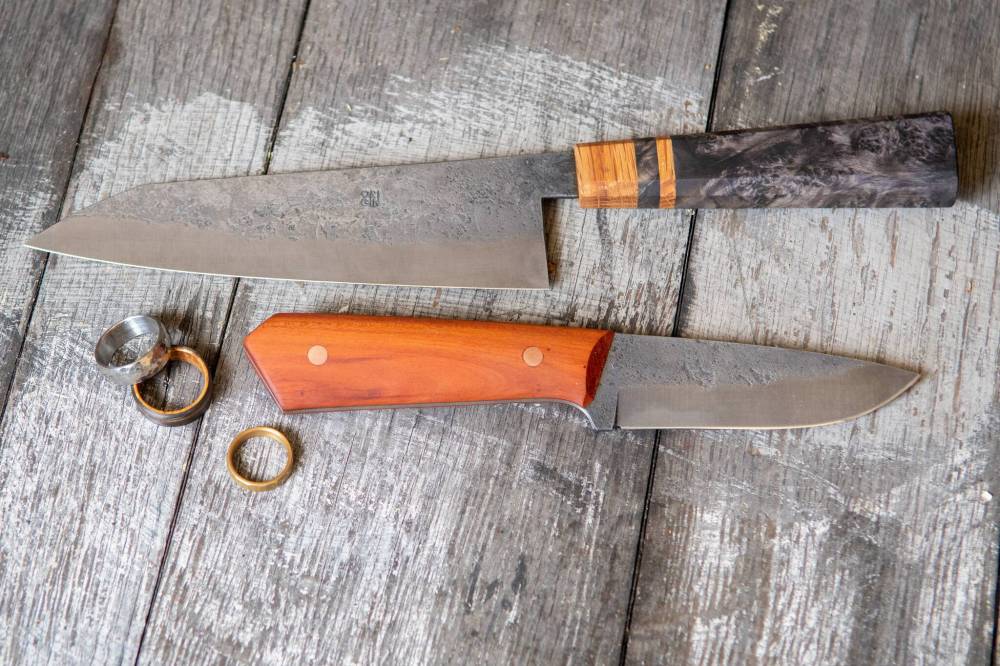
Liss is turning to Kickstarter once again to launch a new set of kitchen knives. This time, he’s sourcing old sawmill blades for his metal.
“It’s nice to breathe new life into something old like that,” Liss said. “There’s an inherent history and story there already.”
He found about 30 blades in a Gunton antique store. They’re all over Manitoba, but it takes time to find them, he said.
He’s using Kickstarter again to see if interest for kitchen knives is there, and because it can be a better customer-attractor than options such as Etsy, he said.
The Kickstarter campaign is running until the end of June. As of Friday afternoon, it had 23 backers and raised over $11,000 of its $20,000 goal. It began Wednesday.
gabrielle.piche@winnipegfreepress.com

Gabby is a big fan of people, writing and learning. She graduated from Red River College’s Creative Communications program in the spring of 2020.
Our newsroom depends on a growing audience of readers to power our journalism. If you are not a paid reader, please consider becoming a subscriber.
Our newsroom depends on its audience of readers to power our journalism. Thank you for your support.







